- Home
- Mark Wayne McGinnis
Scrapyard LEGACY (Star Watch Book 6)
Scrapyard LEGACY (Star Watch Book 6) Read online
Table of Contents
Title Page
Copyright
Prologue
Chapter 1
Chapter 2
Chapter 3
Chapter 4
Chapter 5
Chapter 6
Chapter 7
Chapter 8
Chapter 9
Chapter 10
Chapter 11
Chapter 12
Chapter 13
Chapter 14
Chapter 15
Chapter 16
Chapter 17
Chapter 18
Chapter 19
Chapter 20
Chapter 21
Chapter 22
Chapter 23
Chapter 24
Chapter 25
Chapter 26
Chapter 27
Chapter 28
Chapter 29
Chapter 30
Chapter 31
Chapter 32
Chapter 33
Chapter 34
Chapter 35
Chapter 36
Chapter 37
Chapter 38
Chapter 39
Chapter 40
Chapter 41
Chapter 42
Chapter 43
Chapter 44
Chapter 45
Chapter 46
Chapter 47
Chapter 48
Chapter 49
Chapter 51
Acknowledgments
Other Books by MWM
SCRAPYARD
LEGACY
… A STAR WATCH STORY
Written By
Mark Wayne McGinnis
Copyright
Copyright © 2017 by Mark Wayne McGinnis All rights reserved. No part of this publication may be reproduced, distributed, or transmitted in any form or by any means, including photocopying, recording, or other electronic or mechanical methods, without the prior written permission of the publisher, except in the case of brief quotations embodied in critical reviews and certain other noncommercial uses permitted by copyright law. For permission requests, write to the publisher, addressed “Attention: Permissions Coordinator,” at the address below. This book is a work of fiction. Names, characters, places, and incidents either are products of the author’s imagination or are used fictitiously. Any resemblance to actual persons, living or dead, events, or locales is entirely coincidental.
Cover design by:
MWM
Edited by:
Lura Lee Genz
Mia Manns
Published by:
Avenstar Productions
E-book ISBN: 978-0-9974514-9-8
To join Mark’s mailing list, jump to:
http://eepurl.com/bs7M9r
Visit Mark Wayne McGinnis at
http://www.markwaynemcginnis.com
Quick Author’s Tip #1:
For those using web-enabled e-readers, or who have access to the web via a PC, you can now refer back to the author’s website for some pretty cool background information. In addition to illustrated floor plans of ships, such as the Parcical. Recently added, within Explore The Ships, are beautiful—rotatable—3D diagrams of many of the ships.
Quick Author’s Tip #2:
After seven Scrapyard Ship books and five Star Watch books, there’s a ton of character names, various alien star systems and planet names, not to mention all of the series-specific SciFi terms and phrases … well, help is here! On the Mark Wayne McGinnis website there’s a complete Glossary of Terms for your reference.
Prologue
Sommis of Adriark space — one week previous
In spite of the circumstances, Captain Granger was doing a good job keeping his cool, calm demeanor—at least on the surface. What was going on in his head was a completely different matter.
“This way, gentlemen,” he said. “… Please stay close. I wouldn’t want you to get lost in here. The Aquarius, a Caldurian Master Class vessel, has over four hundred and thirty miles of corridors, sub-passageways, and more than a few elevated catwalks.”
He was well aware the Thorian knights were taking in the magnificent ship in all its splendor. A ship that was characteristically Caldurian, it had soft indirect lighting and bulkheads with artfully textured panels—utilizing a pallet of organically pleasing colors and hues that were both soothing and inspiring at the same time. Here, the voluminous spaces that were certainly ultra-modern in overall scope—but tasteful too—had none of the stark, utilitarian design found on pretty much any other interstellar spacecraft within the sector. The five knights made no response, striding ahead purposefully—their heads turned this way and that—like the owners of a new home, studying where they’d later be placing the furniture.
Granger, himself of Caldurian heritage—close to six feet in height—was physically dwarfed in size by the monarch’s nephews. Each of the young Thorians wore tanned leather breastplate garments with an abundance of big brass buckles and clasps. Brutish in their features—with broad foreheads, broad noses, and bulbous lips—they also shared a nearly identical hairstyle—short bangs, almost military-looking, with a straight as an arrow part down the center.
They certainly don’t possess the charm and personality of their uncle, Granger mused. But that, too, mattered little at the present. Granger just needed to survive the next few minutes.
Captain Granger casually wiped away perspiration collecting upon his upper lip. He heard a faint chirp in his NanoCom. It was his signal. The only one he would get. Their comms technology had been breached—like everything else on the ship. Worse … they were alone. The U.S. Fleet Star Watch vessel, the Aquarius, was on a mission of great importance. Importance and secrecy. Supposedly, it was a mission that heralded much promise for the future of the Alliance.
Granger changed direction at a T-junction—turning right, and then, two hundred paces further on, turning left. From there, the knights could look out a series of tall starboard-side observation windows which provided uninterrupted views of Xavier Station 35 and the recently moored, much smaller Vicksol warship. A breathtaking sight. Granger knew that would get their attention—their own nearby vessel at such a close proximity. Not a bad-looking ship. A third the size of the Aquarius, it was a true warship. In contrast to a Caldurian ship’s smooth edges and soft lines, the Vicksol looked mean and menacing. Normally, such a craft would be no match for Caldurian high tech armaments and weaponry, but currently, things on board were not normal—not by any stretch.
The problems had seemed fairly inconsequential, at first. Three days into the Thorian knights’ first visit on board, while berthed at Xavier Station 35, there’d been a few mechanical issues with the Aquarius’s shields, DeckPorts indiscriminately becoming inoperable—then their weaponry systems, which utilized the ship’s phase-synthesizer, had gone completely down.
“We’re almost there. You will be most impressed with this Zip Farm …” Granger said.
“I was under the impression the Zip Accelerators were farther astern, Captain?” one of the knights, who went by the name Galvin, interjected. His expression showed his growing suspicion that something was amiss. He licked his lips, something Granger noticed all five of the brothers did repeatedly—to distraction. Granger kept his expression neutral, although there was something unsettling about seeing copious amounts of saliva glistening on another man’s lips.
“We’re here,” Granger said, making another turn into a much narrower and far less illuminated passageway. The knights, who had walked five abreast before, were now forced to walk in twos. Granger hurried several paces ahead, saying, “Let me get the hatch open up here.”
But the hatch opened on its own
as Granger approached. Once clear of the entrance, he quickly dove to his right.
The five knights reacted with speed and surprising dexterity, each yielding a Sommis blade pulled from a decorative sheath strapped horizontally across their lower backs. Shimmering with energized electric current, their foot-and-a-half-long weapons made varying high-pitched sounds, depending on their orientation and the proximity to those wielding it.
Two Aquarius crewmembers appeared at the open hatchway entrance, both aiming weapons of their own—short-barreled Remington 870 shotguns. The Earth-made weapons were by no means high tech, as they did not rely on Caldurian technology. Still, even this low tech had been tried and true for well over two hundred years.
Two additional Aquarius crewmembers appeared behind the group at the far end of the passageway, and the five knights were trapped. The crewmembers were armed with the same 870 shotguns.
The king’s nephews broke into two unequal teams—three attacked forward, toward the open hatch, while the other two knights headed back down the passageway.
Granger’s two Aquarius crewmembers withdrew further, stepping backwards—moving further into the compartment—drawing in the three remaining pursuers. With well-practiced flicks of the knights’ wrists, bolts of energy shot out from their knife-like weapons. But these lethal strikes seemed to stop midair—loudly crackling and smoldering ineffectively. Frustrated, the three knights pursued their prey even further into the passageway and then into the compartment beyond. There, the knights came to an abrupt halt.
“Fucking mirrors!” one of the king’s nephews angrily spat.
The small compartment in which they all now stood was definitely not the ship’s Zip Farm, but one of many small equipment holds. Propped up before them was a series of six three-foot-wide by seven-foot-tall standing mirrors. Angled just so—the crewmembers had used the combination of the three mirrors to give the impression there were two armed assailants standing before them at the opening of the hatch. No one was really there. Behind the knights, more Aquarius crewmembers appeared—all armed with shotguns.
Granger was already standing behind one of the shielding mirrors. So far so good, he thought. He and his men had practiced this crazy maneuver for over three hours that very morning, but he hadn’t been convinced it could actually work.
“Drop your weapons,” Granger ordered.
It was now clear to the king’s knights that they had been outwitted. What they had fired at was nothing more than the reflected images of crewmembers standing out of danger. The knights’ expertly wielded Sommis blade energy bolts were wasted and ineffective.
From outside the hold—at the far end of the passageway—came a horrendously loud series of short-barreled rifle shots.
Granger said, “Drop your weapons now or face the same fate as your cousins. Your very dead cousins.”
The three surviving king’s knights reluctantly did as ordered.
“You can lock them up in here,” Granger said, leaning over to retrieve one of the knights’ Sommis blades. “I want no less than three guards posted outside this hatch at all times.”
* * *
Captain Granger hurried onto the Aquarius’s bridge, where a handful of anxious bridge crew turned toward him. He looked at the young petty officer, seated at the helm console, and ordered, “Prepare to get us the hell out of here, Drake. Rev up the drives.”
They had practiced this aspect of the escape too—albeit more theoretically than in reality.
Granger turned to the Drakinian female crewmember with wild blue hair sitting at the tactical board. “Commander Ploth … ready aft rail guns!”
“Ready now, sir,” she said, still busy at her board.
Granger saw that the wraparound display had swung around one hundred and eighty degrees, so that the Aquarius stern was now before them. Beyond lay Xavier Station 35—not only a space station of gargantuan proportions but one, Granger was certain, that was armed with any number of highly powerful weapons.
“Locked on, Captain. We have a limited amount of ammunition available … without our JIT phase-replacement capabilities …” Commander Ploth said.
Granger saw a series of ten tracking crosshairs now positioned up on the display. All were locked on to the retractable bridgeway that connected the Aquarius to an adjacent concourse on Xavier Station.
“Blow it away, Commander.”
With a series of short bursts, the aft rail gun came alive and the connecting bridgeway fragmented into thousands of individual pieces.
“We’re free!” Petty Officer Drake announced.
“Now take out the Vicksol!” Granger commanded.
As with the connecting bridge, the bow of the king’s warship began to fragment—small micro-explosions erupted one after another. Granger felt the vibrations beneath his feet change intensity—the rail gun was already out of ammunition.
Captain Granger watched as the Aquarius moved away from the looming space station. From here on out, they would not be able to utilize their Caldurian technology or other advanced means of transportation. That meant no phase-shifting—no calling up an interchange wormhole. Mere FTL travel was incredibly slow, in terms of the distance they would need to traverse in order to get to where they wanted to be.
“No surprise … we’re being chased, Captain. I count twenty-five Python fighters. Also, engines are heating up on two blunt-nose cruisers. The Vicksol is also on the move. She’s damaged but operational.”
Granger lowered himself into the captain’s chair and now the guilt came. It was all-encompassing—thinking about his people—close to seven hundred crewmembers that he’d just abandoned behind them—down on the planet, Thorian Banal.
Chapter 1
Sol System — present day
Fighting a yawn and boredom, Bristol stood at the habitat’s ten-foot-wide by ten-foot-high virtual window. As with the hundreds of other HABs in this compartment, an aqua-blue glow emanated out from the portal, which gave Bristol’s face an even sicklier pallor than normal. A long, wide strap slung over his shoulder supported the weight of a hand-held Viron2 tester unit. He moved over to the small holographic access panel—midway up on the habitat’s right—and scoffed at the readings. “What the fu—” then caught himself. Bristol glanced around the deserted Zoo corridor. He’d been warned about using profanity, especially on this one particular ship—the Parcical—a Rogue Class Caldurian technology spacecraft, which was the Omni’s command ship. Omni Reynolds was a hard ass when it came to using profanity aboard any ship, and Bristol was on the old man’s shit list.
Bringing two fingers up to his right ear, he hailed the captain.
“Go for Captain … so what have you found, Bristol?”
“Something’s definitely FUBAR, Cap. Omni says it’s been bad ever since returning from his last diplomatic mission out of Allied space. So I don’t know what’s wrong here. My Viron2 readings are wonky. It’s almost like …” Bristol hesitated for several beats.
“Like what?”
“Like the internal habitat settings have been screwed with.”
“By whom? Who even has access to do something like that?”
Bristol rolled his eyes. “It’s more complicated than that, Captain. Just having access wouldn’t be enough to mess with HAB 311’s core software parameters. It’s way, way more complicated. I couldn’t do it … not easily, anyway. We’re talking Ricket-type smarts. That’s what would be required.”
Bristol rechecked his readings. “Some of the indicators are okay, just as expected for Porlus9. Usually sunny, it’s like a humid hotbox in there. There’s also burgeoning, early lifeforms with minimal intelligence—akin to Earth’s small, warm-blooded mammals … like rats, rodents, maybe squirrels. A lot of insects crawling around too.” Bristol briefly wondered why the Caldurians, advanced deep-space explorers and scientists, would select such a loser planet to mimic. “Habitats are basically identical copies of actual interstellar worlds, or at least a small, sectionalized part of th
ose worlds. But that didn’t by any means minimize the lengths to which our Caldurian friends went to ensure everything within a given HAB actually worked. Take photosynthesis, for example—the process used by plants, algae, certain bacteria, even a blade of grass. The same complex process used to harness energy from sunlight or starlight—into chemical energy. It all works within the habitat as it does within the original bio-system.”
Bristol continued to stare into the portal. Though usually no larger in size than a few hundred square miles, a HAB could go up to a thousand square miles, all duplicated down to the molecular level. The copycat landscape, stored in virtual memory, could be accessed via a HAB portal and contained within a Caldurian ship’s Zoo compartment. Again, Bristol wondered what was in there that was worth all the trouble.
“Well, what else do you see?” the captain asked.
“All I see is an uninteresting habitat. As far as the readings I’m getting, well … wait a minute! This is strange. There are energy spikes that should not be emanating from a non-industrialized environment.”
“What kind of spikes? Enough to cause problems there within the Parcical?”
Bristol readjusted the viron2 settings. “Yeah … I’d say so. I’ve never seen anything like this. And one more thing, Captain. The habitat’s outer confines … constraints … they’re all messed up.”
“What do you mean?”
“I’m not seeing the typical outer parameter markers. It’s like I’m viewing an entire world here, not just a segment of it. It’s as if the entire encompassing landscape that’s missing … well, it’s all been filled in—regenerated.”
“Maybe a configuration glitch. Is it something you can reset?”
“No way! These habitats, even these extra ones added to the Parcical, don’t work that way. All Caldurian Zoo HABs are pretty much the same as what we’re used to … same as what’s on the Jumelle and the Minian, and once was on The Lilly. They are relatively small, confined, virtual environments. You’re not getting the full implication yet of how crazy this is, Captain. It’s basically impossible. This HAB portal now opens up nearly to a whole fucking planet … not just a few hundred square miles of virtually-stored landscape space.”

 The Hidden Ship
The Hidden Ship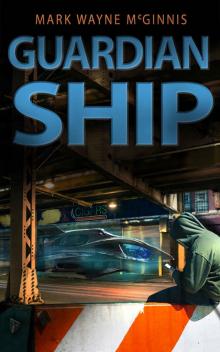 Guardian Ship
Guardian Ship Cloudwalkers
Cloudwalkers Mad Powers (Tapped In)
Mad Powers (Tapped In) Ship Wrecked
Ship Wrecked The Great Space (Scrapyard Ship Book 6)
The Great Space (Scrapyard Ship Book 6)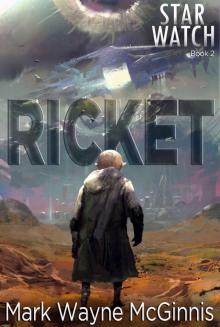 Ricket (Star Watch Book 2)
Ricket (Star Watch Book 2)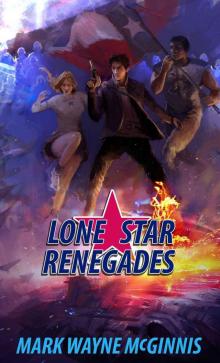 Lone Star Renegades
Lone Star Renegades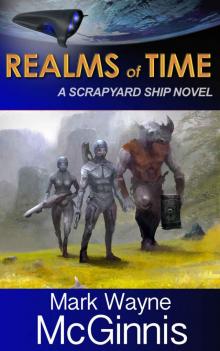 Realms of Time (Scrapyard Ship)
Realms of Time (Scrapyard Ship)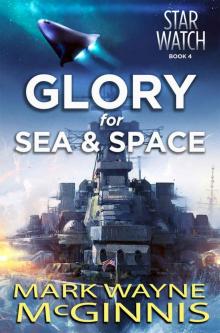 Glory for Sea and Space (Star Watch Book 4)
Glory for Sea and Space (Star Watch Book 4)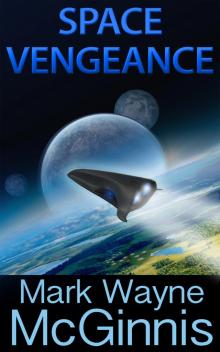 Scrapyard Ship 3 Space Vengeance
Scrapyard Ship 3 Space Vengeance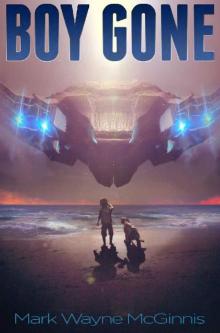 Boy Gone
Boy Gone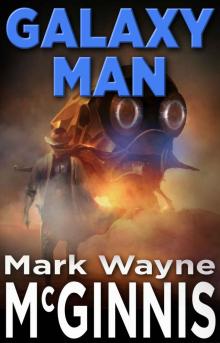 Galaxy Man
Galaxy Man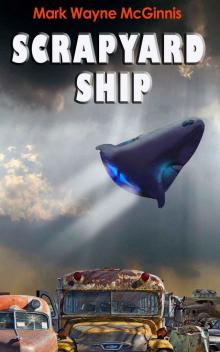 Scrapyard Ship
Scrapyard Ship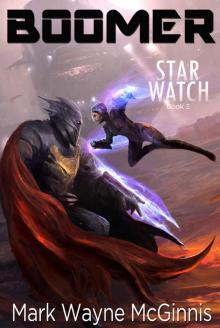 Boomer (Star Watch Book 3)
Boomer (Star Watch Book 3)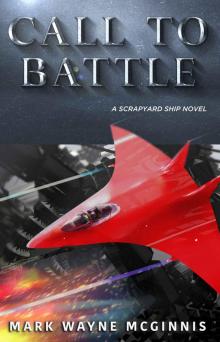 Scrapyard Ship 7: Call to Battle
Scrapyard Ship 7: Call to Battle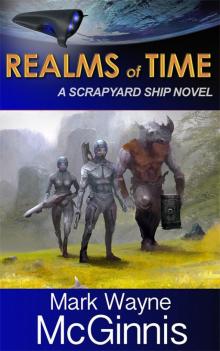 Scrapyard Ship 4 Realms of Time
Scrapyard Ship 4 Realms of Time Star Watch
Star Watch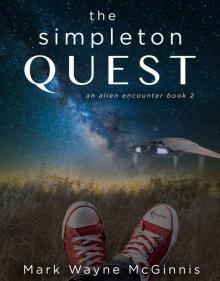 The Simpleton QUEST
The Simpleton QUEST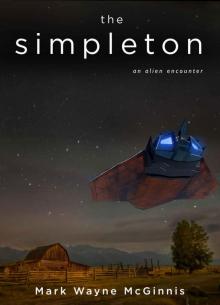 The Simpleton: An Alien Encounter
The Simpleton: An Alien Encounter Scrapyard LEGACY (Star Watch Book 6)
Scrapyard LEGACY (Star Watch Book 6)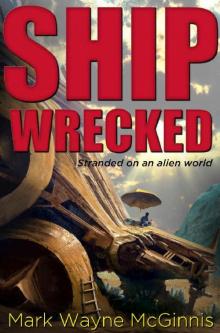 Ship Wrecked: Stranded on an alien world
Ship Wrecked: Stranded on an alien world